
It's an infograph vocalising the use of polymers in space based on verified research done.
- Subject:
- Astronomy
- Atmospheric Science
- Chemistry
- Physical Science
- Material Type:
- Assessment
- Homework/Assignment
- Author:
- Afifa Rifai
- Date Added:
- 03/09/2023

It's an infograph vocalising the use of polymers in space based on verified research done.

This course details the quantitative treatment of chemical processes in aquatic systems such as lakes, oceans, rivers, estuaries, groundwaters, and wastewaters. It includes a brief review of chemical thermodynamics that is followed by discussion of acid-base, precipitation-dissolution, coordination, and reduction-oxidation reactions. Emphasis is on equilibrium calculations as a tool for understanding the variables that govern the chemical composition of aquatic systems and the fate of inorganic pollutants.
This course is offered through The MIT/WHOI Joint Program. The MIT/WHOI Joint Program is one of the premier marine science graduate programs in the world. It draws on the complementary strengths and approaches of two great institutions: the Massachusetts Institute of Technology (MIT) and the Woods Hole Oceanographic Institution (WHOI).

This video segment adapted from Building Big illustrates the strength of the arch in bridge design and construction.

This informational text introduces students to similarities and differences in the North and South Poles. The text is written at a grade one through two reading level. This is a PDF containing the informational text and a glossary.

This video segment adapted from NOVA features a variety of scientific perspectives on the age old question, "Are we alone in the universe?" Animations make vivid the improbability that we could intercept a radio wave signaling extra terrestrial intelligence.

This resource is a video abstract of a research paper created by Research Square on behalf of its authors. It provides a synopsis that's easy to understand, and can be used to introduce the topics it covers to students, researchers, and the general public. The video's transcript is also provided in full, with a portion provided below for preview:
"It’s a feared moment for every scientist: the discovery that years of painstaking research has led to results that can't be repeated. Many think that poorly characterized antibodies have contributed to this reproducibility crisis more than any other laboratory tool. A new study published in Molecular Cell supports this hypothesis, at least in the context of chromatin immunoprecipitation. Although accurate ChIP interpretation depends on near-perfect antibody specificity, the report shows that many of these reagents are far less capable than their advertising suggests, which calls into question several widely accepted paradigms on genomic regulation. The study focused on histone post-translational modifications; specifically all three methylation states of lysine 4 on histone H3. Through ChIP experiments, H3K4 methylation has been strongly linked to transcriptional control..."
The rest of the transcript, along with a link to the research itself, is available on the resource itself.

If you’ve been paying attention so far in this series, you’ve probably heard of benzene. This molecule is flat, cyclic, and belongs to a special class of compounds known as aromatics. In this episode of Crash Course Organic Chemistry, we’ll learn all about aromatic compounds, their properties, reactivities, and some of the most important examples, like benzene. We’ll also revisit our friend NMR, and hear about some dubious science history!

What's that smell? Smell's like Organic Chemistry! This week Hank talks about Aromatics and Cyclic Compounds, naming their substituents, resonance, and common reactions & uses.

This artcile is about Arsenic poisoning

This article and slide show from the New York Times, features several scientists from the University of Alaska, Fairbanks, who study the effects of thawing permafrost in Alaska.

In this laboratory exercise students will have an opportunity to examine the crystal structures, optical properties and health hazards of the common asbestos minerals. The laboratory will reinforce optical microscopic skills that students have learned in mineralogy and show them how mineralogy can be critical to understanding a current public policy issue.
(Note: this resource was added to OER Commons as part of a batch upload of over 2,200 records. If you notice an issue with the quality of the metadata, please let us know by using the 'report' button and we will flag it for consideration.)

In this interactive activity from ChemThink, take a closer look at atomic structure, properties, and behaviors.

Atoms are a lot like us - we call their relationships "bonds," and there are many different types. Each kind of atomic relationship requires a different type of energy, but they all do best when they settle into the lowest stress situation possible. The nature of the bond between atoms is related to the distance between them and, like people, it also depends on how positive or negative they are. Unlike human relationships, we can analyze exactly what makes chemical relationships work, and that's what this episode is all about.
If you are paying attention, you will learn that chemical bonds form in order to minimize the energy difference between two atoms or ions; that those chemical bonds may be covalent if atoms share electrons, and that covalent bonds can share those electrons evenly or unevenly; that bonds can also be ionic if the electrons are transferred instead of shared: and how to calculate the energy transferred in an ionic bond using Coulomb's Law.
Chapters:
Bonds Minimize Energy
Covalent Bonds
Ionic Bonds
Coulomb's Law
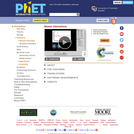
Explore the interactions between various combinations of two atoms. Turn on the force arrows to see either the total force acting on the atoms or the individual attractive and repulsive forces. Try the "Adjustable Attraction" atom to see how changing the parameters affects the interaction.
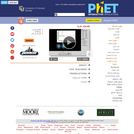
Explore the interactions between various combinations of two atoms. Turn on the force arrows to see either the total force acting on the atoms or the individual attractive and repulsive forces. Try the "Adjustable Attraction" atom to see how changing the parameters affects the interaction.
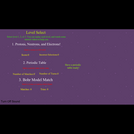
Reviews middle school chemistry for getting information about atomic structure and periodic table grouping.
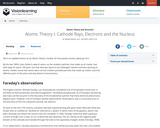
This lesson introduces J. J. Thomson's discovery of the electron and E. Rutherford's planetary model of atomic structure. This is the first in a series covering modern atomic theory.
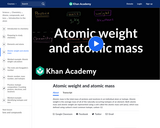
The difference between atomic weight and atomic mass in chemistry, and how it compares to the physics definitions of weight and mass.

CHEMISTRY 2ND EDITION
Long Description:
Chemistry: Atoms First 2e is a peer-reviewed, openly licensed introductory textbook produced through a collaborative publishing partnership between OpenStax and the University of Connecticut and UConn Undergraduate Student Government Association.This text is an atoms-first adaptation of OpenStax Chemistry 2e. The intention of “atoms-first” involves a few basic principles: first, it introduces atomic and molecular structure much earlier than the traditional approach, and it threads these themes through subsequent chapters. This approach may be chosen as a way to delay the introduction of material such as stoichiometry that students traditionally find abstract and difficult, thereby allowing students time to acclimate their study skills to chemistry. Additionally, it gives students a basis for understanding the application of quantitative principles to the chemistry that underlies the entire course. It also aims to center the study of chemistry on the atomic foundation that many will expand upon in a later course covering organic chemistry, easing that transition when the time arrives.
The second edition has been revised to incorporate clearer, more current, and more dynamic explanations, while maintaining the same organization as the first edition. Substantial improvements have been made in the figures, illustrations, and example exercises that support the text narrative. The first edition of Chemistry: Atoms First by OpenStax is available in web view here.
Word Count: 374196
ISBN: 978-1-998755-61-5
(Note: This resource's metadata has been created automatically by reformatting and/or combining the information that the author initially provided as part of a bulk import process.)

This lesson combines a powerpoint lecture and a reading activity to teach students about the theory and structure of atoms.